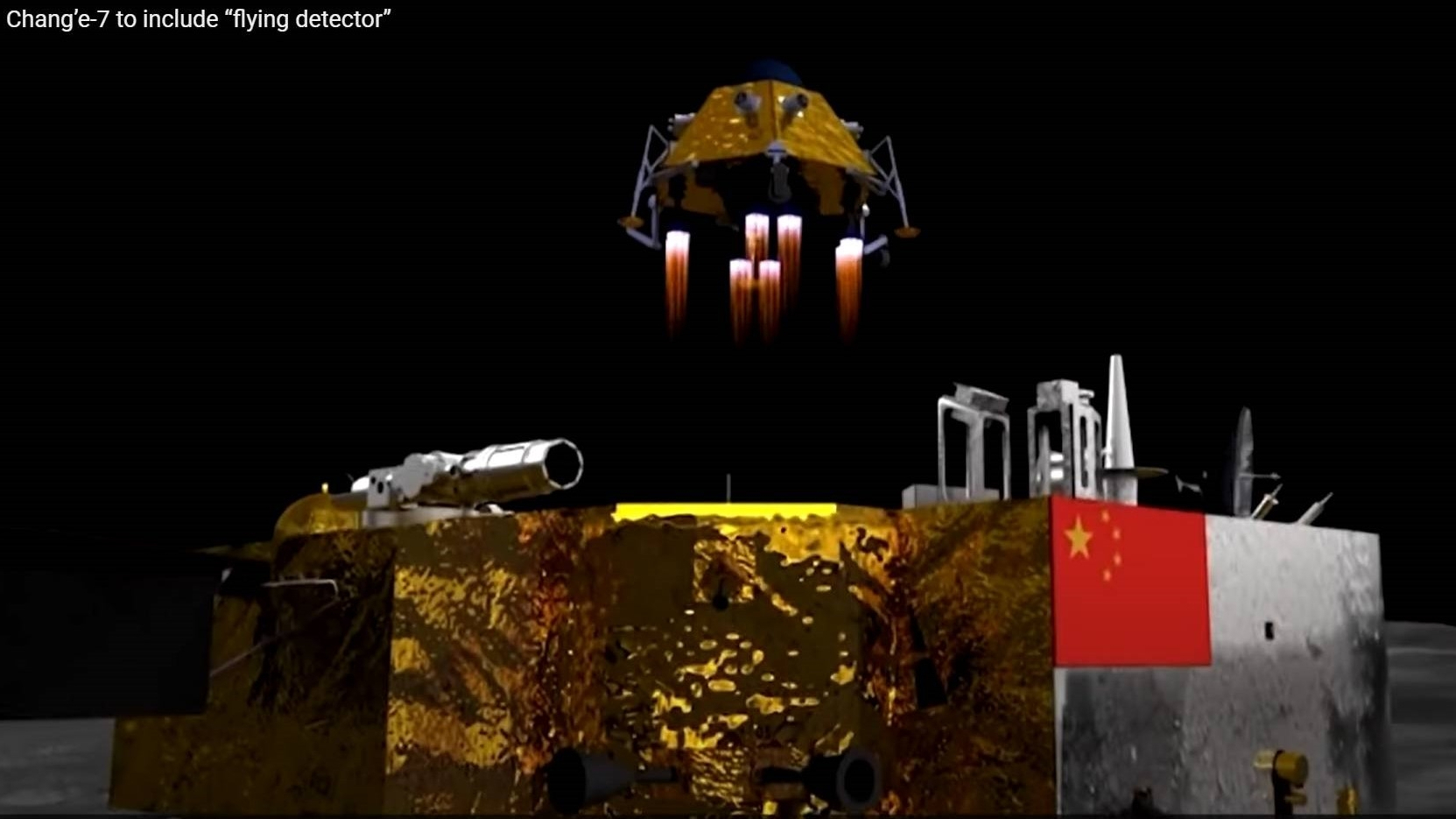
Research work on building China's Chang'e 7 lunar exploration mission includes sending a flag that can flutter in the moon's thin and tenuous atmosphere.
"We know that the moon is vacuum with no air, so it is difficult to make a flag flutter by wind like on Earth," said Zhang Tianzhu, deputy head of the institute of future technology at the Deep Space Exploration Laboratory.
That lab was co-established by the China National Space Administration and the University of Science and Technology of China and began operations in June 2022. It is headquartered in Hefei, the capital city of Anhui, and has a branch in Beijing.
Fluttering solution
Zhang said the flag-fluttering solution is based on arranging closed loop wires on the surface of the flag with access to two-way positive and negative current, which will "make the flag flutter through the interaction of electromagnetic fields."
China plans to launch its Chang'e 7 lunar lander to find traces of water ice at the moon's south pole around 2026. If successful, the deployed flag will be the first to actually flutter on the lunar surface.
Related: China's Chang'e 6 mission carried a stone flag to the moon's far side
Sustainable and scalable
"Now, in order to complete the development of our popular science test payload in February, we are motivated and divided into different groups to advance this task," Zhang told China Central Television (CCTV).
Work is also proceeding on the following Chang'e 8 lunar lander mission and the International Lunar Research Station (ILRS), an outpost that China plans to build near the moon's south pole with Russia and other partners.
"Our goal is to establish a sustainable and scalable comprehensive scientific experimental facility on the lunar surface and in lunar orbit, capable of long-term autonomous operation and short-term human participation, and to basically build an International Lunar Research Station by around 2035," said Zhang.







